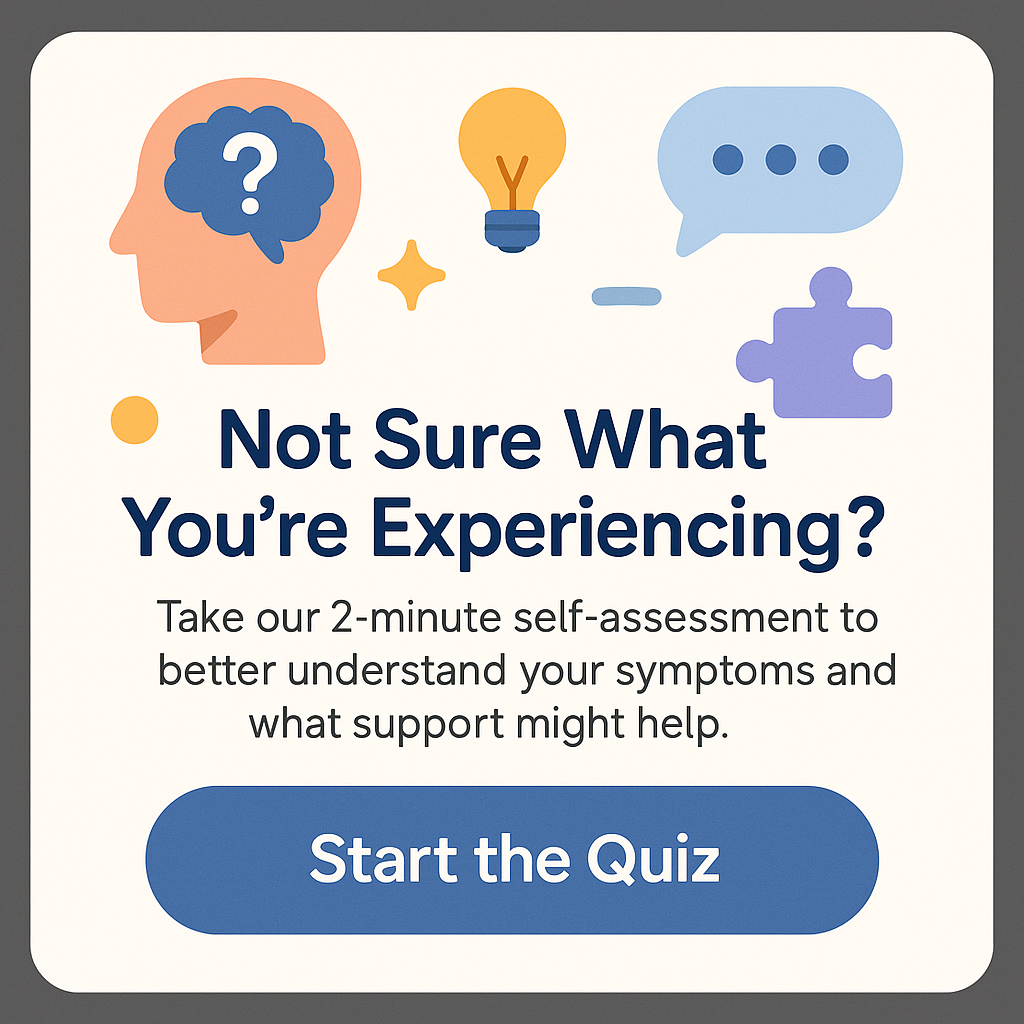Is ADHD a Form of Autism? Understanding the Differences and Similarities
Is ADHD a form of autism? This question is often posed by parents, educators, and individuals navigating the complexities of neurodevelopmental disorders. Attention Deficit Hyperactivity Disorder (ADHD) and Autism Spectrum Disorder (ASD) share various characteristics, but they are distinct conditions with different diagnostic criteria, symptoms, and treatment approaches. In this comprehensive article, we’ll explore the nuances of ADHD and autism, including their similarities, differences, and how they coexist in some individuals. So, let’s delve deeper into this intricate subject and answer the pressing question: is ADHD a form of autism?
What Are ADHD and Autism Spectrum Disorder?
Before we can answer the primary question, it is essential to understand what ADHD and autism are, including their defining traits and how they manifest in individuals.
ADHD is characterized by persistent patterns of inattention, hyperactivity, and impulsiveness. According to the Centers for Disease Control and Prevention (CDC), ADHD affects about 6.1 million children in the United States alone. Symptoms of ADHD can include difficulty organizing tasks, forgetfulness, fidgeting, and interrupting others during conversations. ADHD can be diagnosed as predominantly inattentive, predominantly hyperactive-impulsive, or a combination of the two types.
On the other hand, Autism Spectrum Disorder (ASD) encompasses a range of conditions characterized by challenges in social communication, restrictive interests, and repetitive behaviors. The Autism Speaks organization estimates that 1 in 44 children is diagnosed with autism in the U.S., making it a significant concern for families and communities. Individuals with autism may have difficulty understanding social cues, engage in specific routines, and may have varying sensory sensitivities.
Now, while ADHD and autism are classified as separate neurodevelopmental disorders, they often coexist. In fact, studies show that up to 50% of individuals with autism may also meet the diagnostic criteria for ADHD. This overlap can lead to confusion and the question: is ADHD a form of autism?
Similarities Between ADHD and Autism
While ADHD and autism are distinct conditions, they also share several similarities that can make it challenging to differentiate between the two. Here are some of those commonalities:
1. Neurodevelopmental Basis
Both ADHD and autism are categorized as neurodevelopmental disorders, meaning they arise from atypical brain development. This shared basis can lead to overlapping symptoms, as both conditions affect how individuals think, feel, and behave. Research from sources like the National Institute of Child Health and Human Development has shown that variations in brain structure and function are often observed in individuals with ADHD and autism.
2. Social Difficulties
Individuals with ADHD and autism frequently experience challenges in social interactions. For those with ADHD, impulsivity can lead to difficulties in waiting their turn in conversations or understanding social cues. Children with autism may struggle to read nonverbal signals, leading to difficulties in understanding others’ emotions or intentions. Both conditions can lead to social isolation, misunderstandings, and frustration.
3. Sensory Sensitivities
Another similarity is the presence of sensory sensitivities. Individuals with ADHD can be easily distracted by sounds, lights, and other sensory stimuli, leading to challenges in focusing. Conversely, many individuals with autism may have heightened or reduced responses to sensory experiences, often leading to sensory overload. This shared sensory challenge can contribute to difficulties in focusing and interacting effectively in various environments.
4. Emotional Regulation Challenges
Both ADHD and autism can affect emotional regulation. Children with ADHD often display mood swings, frustration, and difficulty managing their emotions due to impulsivity. Similarly, individuals with autism may experience intense emotions and have trouble articulating or regulating these feelings. This emotional dysregulation can impact their relationships and daily functioning.
5. Co-occurrence
One of the most significant points of intersection between ADHD and autism is their co-occurrence. Many individuals exhibit symptoms of both disorders, complicating diagnosis and treatment. This co-occurrence raises questions about the relationship between ADHD and autism — further blurring the lines as to whether ADHD could be perceived as a form of autism.
Differences Between ADHD and Autism
Despite similarities, it is crucial to acknowledge the differences between ADHD and autism. Understanding these distinctions can help in appropriate diagnosis and intervention strategies.
1. Core Symptoms
The core symptoms of ADHD include inattention, hyperactivity, and impulsivity, while autism primarily involves social communication challenges and restricted interests. ADHD symptoms often manifest in behaviors such as forgetfulness, disorganization, and difficulty remaining seated. In contrast, individuals with autism may show difficulties in understanding social interactions, adhering to repetitive routines, and expressing emotions clearly.
2. Social Interaction
Individuals with ADHD typically want to interact with others, but their impulsiveness may hinder successful social engagement. In contrast, individuals with autism may show a lack of interest in social interactions or may prefer solitary activities. Understanding these varying degrees of social engagement helps delineate between the two disorders.
3. Age of Onset and Diagnosis
ADHD symptoms typically become noticeable before the age of 12, often in preschool or early elementary years. Autism may be diagnosed earlier, typically before the age of 3, although the presentation might vary greatly. Early diagnosis is critical for both conditions, but the developmental timelines can differ significantly.
4. Treatment Approaches
Treatment for ADHD often involves behavioral therapy, psychoeducation, and medication options like stimulants. For autism, interventions might focus heavily on applied behavioral analysis (ABA), occupational therapy, and speech therapy, catering specifically to the communication and social skills deficits. Understanding these treatment methodologies helps identify the most effective approaches based on the individual’s diagnostic profile.
5. Comorbid Conditions
While both ADHD and autism can coexist with other mental health conditions, the types of comorbidities may differ. For example, individuals with ADHD may often experience anxiety or depression as a consequence of their struggles with attention and hyperactivity. Conversely, individuals with autism may exhibit anxiety, attention difficulties, and specific learning disabilities due to their unique neurological profile.
Living with ADHD and Autism
When examining whether ADHD is a form of autism, it is essential to consider the lived experiences of individuals with these conditions. The journey for those with ADHD or autism presents unique challenges and triumphs shaped by their neurological profiles. Here are some insights into navigating life with ADHD and autism.
Personal Experiences
People diagnosed with ADHD often report feelings of frustration due to their impulsivity and challenges in concentration. Similarly, those living with autism experience difficulties related to social cues and communication that can isolate them from their peers. It is essential to create supportive environments that embrace the unique attributes of individuals with these conditions. This includes fostering inclusivity in schools, workplaces, and social settings where they can thrive.
Advocacy and Support Systems
Support groups, educational programs, and advocacy organizations play an essential role in helping individuals with ADHD and autism navigate their experiences. Family members and friends can educate themselves to better understand these conditions, providing much-needed infrastructure for coping and thriving. Resources tailored to these conditions help navigate the complexities of their behaviors and challenges, reducing stigma and fostering self-acceptance.
Conclusion
In conclusion, while ADHD and autism share several similarities, they are distinct neurodevelopmental disorders. To address the question, is ADHD a form of autism? The answer is no; ADHD is not a form of autism, though they can co-occur and share overlapping traits. Recognizing the unique characteristics of each condition is crucial for effective diagnosis, treatment, and support. As our understanding of these disorders continues to evolve, increased awareness and acceptance are paramount in fostering an inclusive environment for individuals with ADHD, autism, or both.
FAQs
1. Can a person have both ADHD and autism?
Yes, individuals can be diagnosed with both ADHD and autism, as they share overlapping symptoms and traits.
2. How do ADHD and autism differ in treatment?
Treatment approaches differ; ADHD is often managed with behavioral strategies and medication, while autism treatment may focus on social skills development and behavioral interventions.
3. What are common signs of ADHD?
Common signs of ADHD include inattention, hyperactivity, impulsiveness, and difficulties with organization.
4. What are the signs of autism?
Signs of autism may include challenges in social communication, restricted interests, and repetitive behaviors.
5. Is it essential to get a proper diagnosis for ADHD and autism?
Yes, obtaining a proper diagnosis is crucial for developing individualized treatment plans and receiving essential support for improved quality of life.
How Much Does an Autism Diagnosis Cost in Canada?
Understanding Autism Funding BC: A Comprehensive Guide
What is Level 1 Autism? Understanding the Nuances and Support







